Key Tips for Picking a Customer Service Management System in 2025
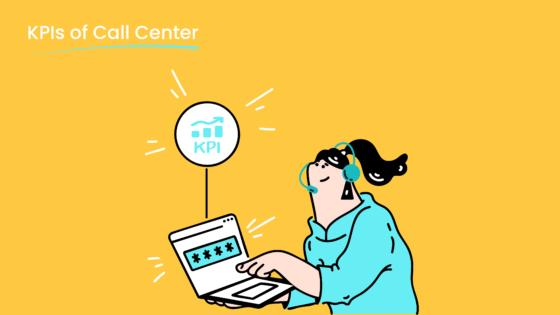
Choosing the right customer service management systems can transform how your business operates in 2025. It’s no longer just about solving problems; it’s about creating experiences that keep customers coming back. Did you know that by 2025, 89% of businesses will compete primarily on customer experience? That’s huge! Plus, 60% of consumers already choose brands based on the service they expect to receive. A system like Sobot can help you meet these growing expectations while boosting efficiency and satisfaction.
Understand Your Business Needs
When it comes to choosing customer service management systems, understanding your business needs is the first and most crucial step. Without a clear picture of what you want to achieve, it’s easy to get lost in the sea of features and options. Let’s break this down into three key areas to help you make the right choice.
Define Your Customer Service Goals
What do you want your customer service team to accomplish? Setting clear goals will guide you in selecting a system that aligns with your business objectives. For example, are you aiming to improve response times, increase first-contact resolutions, or enhance customer satisfaction? Each of these goals requires specific tools and features.
Research shows that identifying high-priority organizational objectives is essential for aligning CRM systems with your corporate strategy. This alignment ensures successful implementation and helps you gain support from key stakeholders. A robust CRM platform supports a range of objectives, from improving customer engagement to streamlining operations. By defining your goals, you’ll know exactly what to look for in a system.
To measure the effectiveness of your goals, consider tracking metrics like resolution rates, average handling times, and customer satisfaction scores. Here’s a quick look at some key metrics:
| Metric | Description | Calculation Method |
|---|---|---|
| Overall resolution rate | Indicates the effectiveness of the support team in resolving issues. | Total number of tickets / number of tickets solved |
| First contact resolution rate | Measures how many cases are resolved on the first contact. | Number of incidents resolved on first contact / total number of incidents |
| Customer ticket request volume | Flags potential issues by tracking the volume of support requests. | Compare support tickets month over month or week over week |
| Average ticket handling time | Measures efficiency in handling cases. | Track time spent per ticket and review average time over a week and a month |
| Customer Satisfaction (CSAT) | Tracks customer satisfaction with products/services. | (Number of satisfied customers / Number of survey responses) x 100 |
| Customer Effort Score (CES) | Measures the effort required by customers to resolve issues. | Typically involves customer feedback surveys. |
By focusing on these metrics, you can ensure your goals are not just aspirational but also measurable.
Identify Pain Points in Your Current System
Take a moment to think about your current customer service setup. What’s not working? Maybe your team struggles with managing high ticket volumes, or perhaps your system lacks integration with other tools like CRM platforms. Identifying these pain points will help you prioritize features when evaluating new systems.
For instance, if your team spends too much time on repetitive tasks, look for a system with automation capabilities. If fragmented communication channels are an issue, consider an omnichannel solution like Sobot’s. It consolidates customer interactions across platforms, making it easier for your team to provide seamless support.
Understanding these challenges isn’t just about fixing what’s broken. It’s about creating a system that empowers your team and enhances the customer experience. After all, a well-integrated system can reduce agent workload, improve response times, and boost customer satisfaction.
Consider the Size and Scope of Your Business
Not all customer service management systems are created equal, and what works for a small startup might not suit a large enterprise. That’s why it’s important to consider the scale and scope of your business when making a decision.
Start by evaluating your company’s stage of growth. Are you a small business looking to scale, or an established enterprise needing advanced features? Next, identify key performance indicators (KPIs) that align with your goals. Here’s a simple guide to help:
| Step | Description |
|---|---|
| 1 | Choose KPIs directly related to your business goals. |
| 2 | Consider your company's stage of growth. |
| 3 | Identify both lagging and leading performance indicators. |
| 4 | Focus on a few key metrics, rather than a slew of data. |
By focusing on these steps, you can ensure the system you choose will grow with your business and adapt to its changing needs. For example, Sobot’s solutions are designed to scale, offering features like global telephony support and AI-powered tools that cater to businesses of all sizes.
Understanding your business needs isn’t just a box to check off. It’s the foundation for choosing a system that will support your team, delight your customers, and drive your business forward.
Evaluate Features of Customer Service Management Systems
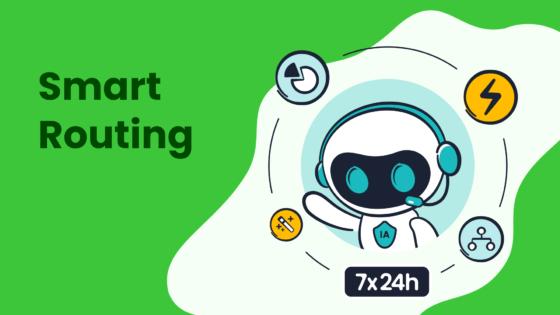
When choosing customer service management systems, the features they offer can make or break your decision. The right tools can transform how you interact with customers, streamline operations, and boost satisfaction. Let’s dive into three must-have features that can elevate your customer service game.
Multi-Channel Support for Seamless Customer Interactions
Your customers don’t stick to just one platform. They might email you today, message you on social media tomorrow, and call your support team next week. That’s why multi-channel support is a game-changer. It ensures you can meet your customers wherever they are, creating a seamless experience across all touchpoints.
Here’s a quick look at the benefits of multi-channel support:
| Benefit | Evidence |
|---|---|
| Increased efficiency | 39% of businesses cite lack of collaboration as a challenge, indicating improved processes. |
| Better data collection | 53% of retailers are investing in multi-channel tools for enhanced customer insights. |
| Enhanced brand image | 48% of marketers use multichannel marketing to boost brand awareness. |
| Customer spending impact | 53% of consumers reduce spending after a bad experience. |
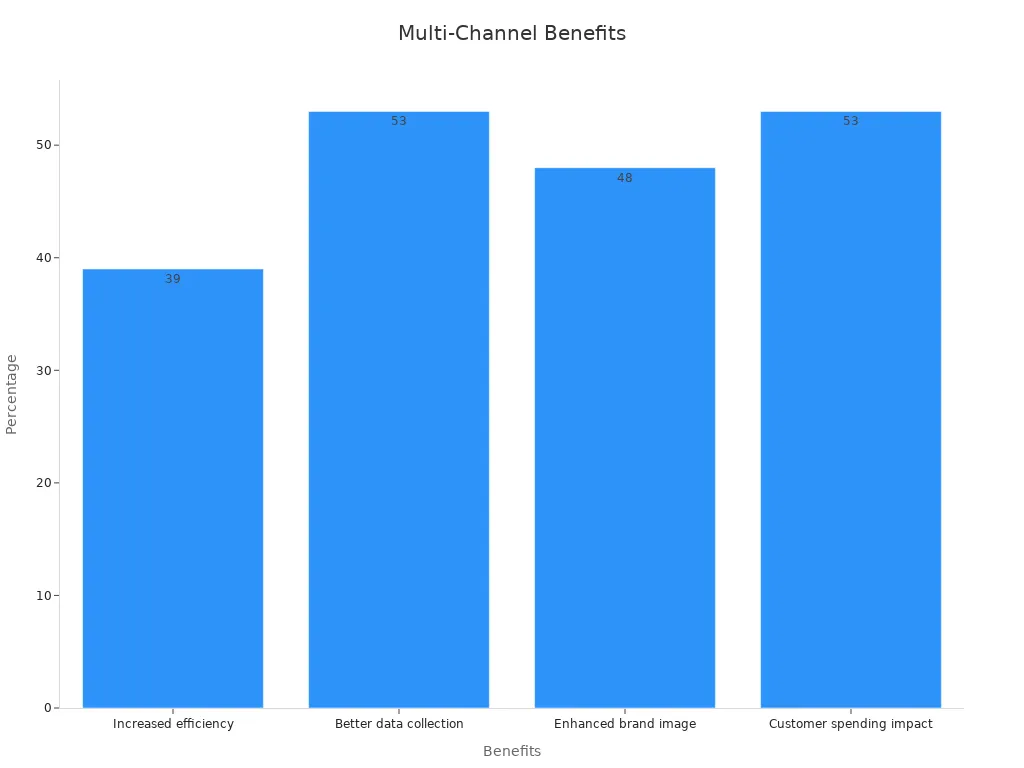
One case study highlights a global retail chain that integrated data from various channels to improve feedback management. Within six months, they saw a 20% increase in customer satisfaction. Another example is a tech startup that used analytics to personalize interactions, reducing churn by 15% and increasing retention by 25%.
With tools like Sobot’s omnichannel solution, you can unify customer interactions across platforms. This not only simplifies your team’s workflow but also ensures your customers feel valued and heard, no matter how they reach out.
Automation and AI Capabilities for Efficiency
Let’s face it—managing repetitive tasks can drain your team’s time and energy. That’s where automation and AI step in. These tools handle routine tasks, freeing up your agents to focus on more complex customer issues. Plus, they can speed up response times and improve accuracy.
Here are some real-world examples of how automation and AI are making a difference:
- AI-Powered Efficiency in Customer Service: Reduced response times by 60% and boosted customer satisfaction scores by 40%.
- Manufacturing Optimization: An automotive company cut unplanned downtime by 50% and increased production output by 20%.
- E-Commerce Personalization: An online platform saw a 25% rise in conversion rates and a 15% drop in churn through AI-driven strategies.
- Fraud Detection Enhancement: A payment processor saved $5M annually by improving fraud detection accuracy to 90%.
Sobot’s AI-powered tools, like its Voicebot, take automation to the next level. They can recognize customer intent, provide intelligent responses, and even route calls to the right agent. This not only improves efficiency but also enhances the overall customer experience.
Reporting and Analytics Tools for Data-Driven Decisions
Data is the backbone of any successful customer service strategy. Reporting and analytics tools help you understand what’s working, what’s not, and where you can improve. They turn raw data into actionable insights, enabling you to make informed decisions.
Here’s how these tools can benefit your business:
- Increase sales and loyalty by tailoring products and services based on customer data.
- Cut costs by identifying opportunities for efficiency.
- Boost productivity by focusing on revenue-generating activities.
- Compete with big businesses by leveraging data for a competitive edge.
- Process more data faster for deeper insights.
- Understand what customers want to refine future offerings.
- Reduce risk significantly with predictive analytics.
For example, Sobot’s reporting tools provide real-time insights into customer interactions. You can track metrics like resolution rates, average handling times, and customer satisfaction scores. This data helps you identify trends, optimize your team’s performance, and deliver a better customer experience.
By investing in these features, you’re not just improving your operations—you’re setting your business up for long-term success.
How Sobot's Voice/Call Center Enhances Customer Service

When it comes to delivering exceptional customer experiences, having the right tools can make all the difference. Sobot’s Voice/Call Center is designed to help you streamline communication, improve efficiency, and keep your customers happy. Let’s explore how this powerful solution can elevate your customer service game.
1. Intelligent Call Routing for Faster Resolutions
Imagine a customer calling your support line and being instantly connected to the right agent. That’s exactly what Sobot’s smart call routing does. It uses advanced workflows to direct calls based on factors like customer needs, agent expertise, or even time zones. This means no more frustrating transfers or long wait times. Your customers get the help they need, faster.
For example, a retail company using Sobot reduced their average call handling time by 30%. This improvement not only boosted customer satisfaction but also allowed their team to handle more inquiries in less time.
2. AI-Powered Voicebot for 24/7 Support
Your customers don’t just reach out during business hours. With Sobot’s AI-powered Voicebot, you can provide round-the-clock support. The Voicebot understands customer intent, answers common questions, and even escalates complex issues to human agents when needed. It’s like having an extra team member who never sleeps.
One global enterprise reported a 40% increase in first-contact resolution rates after implementing Sobot’s Voicebot. This feature not only saves time for your team but also ensures your customers feel valued, no matter when they call.
3. Real-Time Monitoring and Analytics
Data is key to understanding your customers and improving your service. Sobot’s Voice/Call Center offers real-time monitoring and analytics tools that give you insights into call performance, agent productivity, and customer satisfaction. You can track metrics like call volume, resolution rates, and average handling times to identify trends and make data-driven decisions.
For instance, a financial services company used Sobot’s analytics to identify peak call times and adjust staffing accordingly. This proactive approach reduced wait times by 25% and improved overall customer experience.
4. Seamless Integration with Existing Systems
Switching between multiple platforms can slow your team down. Sobot’s Voice/Call Center integrates seamlessly with your existing customer service management systems, CRMs, and other tools. This unified workspace allows your agents to access customer data, call history, and tickets—all in one place. The result? A smoother workflow and happier customers.
5. Global Reach with Unmatched Stability
If your business operates internationally, Sobot has you covered. With global telephony support and a 99.99% system uptime, you can connect with customers anywhere in the world. Plus, features like time zone support ensure your team can provide personalized service, no matter where your customers are located.
Pro Tip: Sobot’s platform is mobile-friendly, so your agents can manage calls and customer interactions on the go. This flexibility is perfect for businesses with remote or hybrid teams.
By choosing Sobot’s Voice/Call Center, you’re not just investing in a tool—you’re investing in a solution that grows with your business. Whether you’re a small startup or a global enterprise, Sobot’s features are designed to help you deliver exceptional customer service every step of the way.
Assess Scalability and Flexibility
Planning for Future Growth
Your business isn’t static, and neither should your customer service management system be. As industries evolve, so do customer expectations. A scalable system ensures you’re ready to handle growth without missing a beat. Whether you’re expanding your team, entering new markets, or launching new products, scalability keeps your operations smooth.
Consider this: the CRM market is projected to grow by 12% annually, reaching $129 billion by 2028. Similarly, the customer experience management market is expected to grow at a 13.6% CAGR from 2024 to 2030. These numbers highlight the importance of choosing a system that can grow alongside your business.
| Statistic Description | Value | Year |
|---|---|---|
| Projected CRM Market Growth | 12% annually | Through 2028 |
| Expected Market Size | $129 billion | By 2028 |
| Customer Experience Management Growth | 13.6% CAGR | 2024 to 2030 |
Sobot’s solutions, for instance, offer global telephony support and AI-powered tools, ensuring you’re equipped to scale effortlessly. With features like intelligent IVR and bulk outbound tasks, you can manage increasing customer demands without compromising quality.
Adapting to Changing Business Needs
Change is inevitable, and your system should help you adapt quickly. Whether it’s shifting market trends, new technologies, or evolving customer preferences, flexibility is key. Businesses that embrace change often see better outcomes. For example, leveraging CRM systems and AI allows you to personalize interactions at scale, while gathering feedback helps you identify areas for improvement.
Here’s how you can stay ahead:
- Focus on understanding and meeting customer needs.
- Use data to anticipate trends and refine your strategies.
- Adopt agile methods to respond to emerging challenges.
Sobot’s omnichannel solution is a great example of adaptability. It integrates seamlessly with platforms like Salesforce and Shopify, ensuring your team can adjust to new tools and workflows with ease. Plus, its unified workspace consolidates customer data, making it easier to deliver personalized service.
Customization Options for Unique Requirements
Every business is unique, and your customer service system should reflect that. Customization allows you to tailor the system to your specific needs, giving you a competitive edge. For instance, offering personalized options not only boosts customer loyalty but also increases sales. Customers are often willing to spend more on tailored experiences.
| Benefit | Description |
|---|---|
| Increase Sales | Customers spend more on customized products, driving revenue growth. |
| Unique Insights | Gain valuable data on customer preferences and behaviors. |
| Competitive Edge | Stand out by offering personalized options. |
| Customer Loyalty | Build emotional connections that encourage repeat purchases. |
Sobot’s solutions provide extensive customization options, from configuring workflows to integrating with third-party apps. This flexibility ensures your system aligns perfectly with your business goals, helping you deliver exceptional customer engagement.
Integration Capabilities with CRM and Other Tools
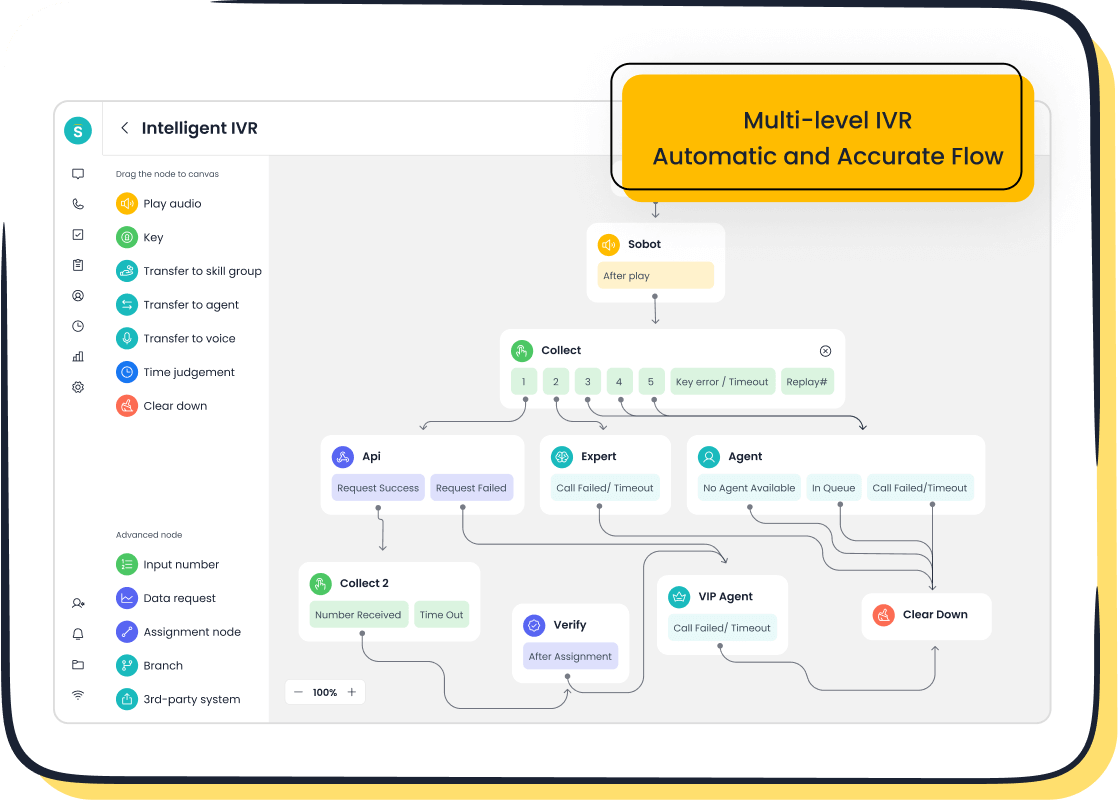
Ensuring Compatibility with Existing Systems
Switching to a new customer service management system can feel overwhelming, especially if you’re worried about compatibility with your existing tools. The good news? Many modern systems, like Sobot, are designed to integrate seamlessly with what you already use. This means you won’t have to overhaul your entire tech stack. Instead, you can enhance it.
Imagine this: You’re running a retail business, and your CRM software already tracks customer data. By choosing a system that works well with your CRM, you can avoid data silos and ensure smooth customer interactions. For example, Company XYZ integrated its CRM with inventory management. This allowed them to provide accurate order updates and personalized recommendations, boosting customer satisfaction. Compatibility isn’t just a convenience—it’s a game-changer for efficiency and customer engagement.
Seamless Integration with CRM Platforms
Your CRM is the heart of your customer service operations. It holds all the valuable data you need to understand and serve your customers better. That’s why seamless integration with CRM platforms is non-negotiable. When your customer service system and CRM work together, magic happens.
Take XYZ Corporation as an example. By integrating their CRM with order management tools, they gained real-time visibility into inventory and order statuses. This improved their operational efficiency and made their customer service team more effective. Another company, X, consolidated customer data through CRM integration. The result? A 30% increase in customer satisfaction ratings and a 20% drop in churn rates. These success stories show how powerful CRM integration can be.
API and Third-Party App Support
Flexibility is key when it comes to customer service tools. That’s where API and third-party app support come in. APIs let you connect your system with other apps, creating a customized solution that fits your unique needs. Whether it’s linking your CRM software with marketing tools or syncing with e-commerce platforms, APIs make it possible.
For instance, if you’re using Shopify for your online store, an API can help you integrate it with your customer service system. This allows your team to access order details directly from the CRM, speeding up resolutions and improving customer satisfaction. With Sobot’s robust API support, you can build a system that works exactly how you need it to.
Pro Tip: Look for systems that offer pre-built integrations with popular tools. This saves time and ensures a smoother setup process.
Sobot's Omnichannel Solution for Unified Customer Interactions
In today’s fast-paced world, customers expect seamless experiences across every platform they use. That’s where Sobot’s omnichannel solution shines. It brings all your customer interactions into one unified workspace, making it easier for your team to deliver fast, personalized support.
Imagine this: A customer starts a conversation on social media, follows up via email, and later calls your support team. With Sobot, your agents can access the entire interaction history in one place. This ensures no details are missed, and your customers feel valued every step of the way.
The results speak for themselves. Businesses using Sobot’s omnichannel solution have seen remarkable improvements. For example:
| Case Study Description | Key Outcomes |
|---|---|
| Reduced inbound discussion volume by 20% and increased positive feedback to 96%+ | Improved customer satisfaction and efficiency |
| Over 80% correct answers and 95% customer satisfaction | Enhanced service for VIP customers and increased trust |
| 22.2% of customer questions answered independently, CSAT score of 97% | Fast, personalized service in Southeast Asian market |
| Sign-off rate increased by 35%, COD collection rate up by 40% | Improved communication between delivery team and consignees |
These numbers highlight how Sobot helps businesses streamline operations while boosting customer satisfaction. Its AI-driven tools handle repetitive tasks, freeing your team to focus on complex issues. Plus, the solution integrates effortlessly with platforms like Salesforce and Shopify, ensuring a smooth workflow.
With Sobot, you’re not just managing customer interactions—you’re building lasting relationships. Whether you’re a small business or a global enterprise, Sobot’s omnichannel solution adapts to your needs, helping you stay ahead in a competitive market.
Compare Costs and ROI
Understanding Pricing Models (Subscription vs. One-Time Fee)
When choosing a customer service management system, understanding how pricing works is essential. Most systems offer two main models: subscription-based and one-time fees. Each has its pros and cons, depending on your business needs.
Subscription models charge a recurring fee, usually monthly or annually. This option is great for businesses that want flexibility and access to regular updates. You don’t have to worry about upfront costs, and you can scale the system as your business grows. On the other hand, one-time fees involve a larger upfront payment but no recurring charges. This model works well for businesses looking for long-term savings and stability.
Here’s a quick comparison:
| Pricing Model | Benefits | Considerations |
|---|---|---|
| Subscription | Flexible, scalable, regular updates | Recurring costs |
| One-Time Fee | Long-term savings, no recurring fees | High upfront investment |
Choosing the right model depends on your budget and growth plans. For example, if you’re a startup, a subscription model might be more manageable. Established businesses might prefer the predictability of a one-time fee.
Calculating Total Cost of Ownership (TCO)
The total cost of ownership (TCO) goes beyond the price tag. It includes all costs associated with purchasing, implementing, and maintaining the system. This comprehensive approach ensures you don’t overlook hidden expenses.
To calculate TCO, consider both direct and indirect costs:
- Direct Costs: Purchase price, installation, and maintenance.
- Indirect Costs: Training, downtime losses, opportunity costs, and remaining value at disposal.
Here’s a step-by-step guide to managing TCO:
- Determine the scope of your needs.
- Select the right technology.
- Plan for development and maintenance costs.
- Address security and compliance requirements.
- Monitor and optimize the system regularly.
For example, a business investing in CRM software might find that training costs and downtime during implementation add up quickly. By factoring these into the TCO, you can make a more informed decision.
Evaluating the Potential Return on Investment (ROI)
ROI helps you measure the financial impact of your investment. It’s not just about the money spent—it’s about the value gained. Businesses that prioritize customer engagement often see significant returns.
Here’s why ROI matters:
- It secures budgets for future initiatives.
- It helps prioritize efforts with the highest potential.
- It demonstrates accountability and aligns departments toward shared goals.
Research shows that investing in customer-first operations can yield up to a 700% ROI over 12 years. For instance, one company added a phone contact option to its CRM software, boosting conversion rates and repeat purchases. This justified their $1.2 million investment.
By understanding ROI, you can make smarter decisions and measure success after implementation. Whether you’re improving customer engagement or streamlining operations, ROI validates the effectiveness of your system.
Why Sobot Offers Cost-Effective Solutions for Businesses
When it comes to balancing quality and affordability, Sobot stands out as a smart choice for businesses. You don’t just save money—you gain tools that help you grow. Let’s break down why Sobot is a cost-effective solution.
1. Flexible Pricing Models
Sobot offers a subscription-based model that adapts to your needs. Whether you’re a startup or a global enterprise, you only pay for what you use. This flexibility ensures you’re not overspending on features you don’t need. Plus, with Sobot’s SaaS rental model, you avoid hefty upfront costs. It’s a win-win for your budget and your business.
2. All-in-One Platform
Why pay for multiple tools when you can get everything in one place? Sobot combines voice call centers, live chat, chatbots, ticketing systems, and WhatsApp API into a single platform. This integration eliminates the need for separate software, saving you both time and money. For example, businesses using Sobot’s omnichannel solution have reported a 30% boost in productivity while reducing operational costs.
3. Automation That Saves Time and Money
Sobot’s AI-powered tools, like its Voicebot and chatbot, handle repetitive tasks efficiently. This reduces the workload on your team, allowing them to focus on complex issues. Automation not only improves customer satisfaction but also cuts labor costs. One company using Sobot’s chatbot saw a 90% reduction in knowledge base maintenance efforts.
Pro Tip: Automating repetitive tasks can save businesses up to $4 million annually, according to industry studies.
4. High ROI with Measurable Results
Sobot’s solutions deliver measurable outcomes. Features like real-time analytics and intelligent IVR help you optimize operations and improve customer satisfaction. Businesses using Sobot have seen up to a 57% increase in repurchase rates, proving that investing in the right tools pays off.
With Sobot, you’re not just cutting costs—you’re investing in a system that grows with your business. Ready to see the difference? Explore Sobot’s solutions here.
Choosing the right customer service management system can transform how you connect with your customers. Focus on key factors like scalability, integration, and features that align with your business goals. Metrics such as first contact resolution and user satisfaction help you measure success.
| KPI | Description |
|---|---|
| First Contact Resolution | Percentage of issues resolved on the first call, leading to higher customer satisfaction. |
| SLA Breach Rate | Percentage of tickets that breach service level agreements, indicating potential staffing issues. |
| User Satisfaction | Measured through surveys, reflecting the overall happiness of customers with the service provided. |
| Cost per Ticket | Operating expense divided by ticket volume, important for understanding support costs. |
| Net Promoter Score | A metric for gauging customer loyalty and satisfaction, focusing on a single statistic. |
Sobot’s solutions stand out with proven results. Businesses using Sobot have seen reduced inbound discussions, a 95% satisfaction score, and a 35% increase in sign-off rates.
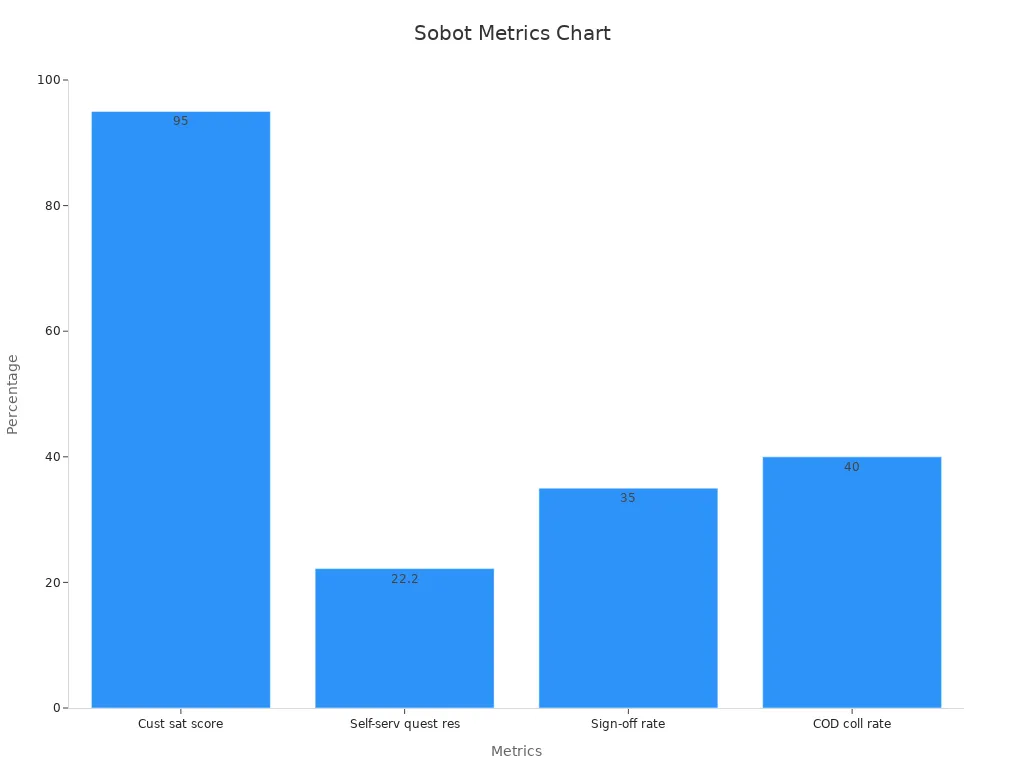
By aligning your system with customer needs and operational goals, you can deliver exceptional service. Ready to elevate your customer experience? Sobot’s innovative tools are here to help you succeed.
FAQ
1. What is the most important feature to look for in a customer service management system?
You should prioritize features that align with your business goals. For example, multi-channel support, automation, and analytics are essential for improving efficiency and customer satisfaction. Sobot’s solutions offer all these features in one platform, making it a great choice.
2. How does Sobot ensure system stability and reliability?
Sobot guarantees a 99.99% system uptime. Its global network infrastructure ensures smooth operations, even during peak times. This reliability means you can focus on serving your customers without worrying about technical issues.
3. Can Sobot integrate with my existing tools and CRM?
Yes! Sobot integrates seamlessly with popular CRMs like Salesforce and Shopify. Its robust API support also allows you to connect with third-party apps, ensuring a unified workflow for your team.
4. Is Sobot suitable for small businesses?
Absolutely! Sobot’s flexible pricing and scalable solutions cater to businesses of all sizes. Whether you’re a startup or an enterprise, Sobot adapts to your needs, helping you grow without overspending.
5. How does Sobot improve customer satisfaction?
Sobot uses AI-powered tools like chatbots and Voicebots to provide fast, personalized support. Its omnichannel solution ensures seamless interactions across platforms, while real-time analytics help you optimize performance. These features work together to enhance the customer experience.
Pro Tip: Explore Sobot’s solutions to see how they can transform your customer service operations. Visit Sobot for more details.
See Also
Essential Tips for Selecting Social Media Support Tools
2024's Leading Customer Service Software Solutions Reviewed
Effective Strategies for Quality Management in Call Centers
